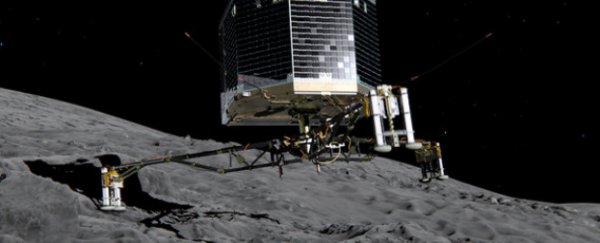Philae only had 60 short hours on Comet 67P/C-G, but it seems that was enough for it to collect plenty of useful data.
In its short burst of productivity, the little lander managed to find organic molecules in the comet's atmosphere, and now scientists have idenfied acoustic sounds picked up from when the probe touched down amongst the data.
Philae had sensors on the "feet" of its legs as part of its Cometary Acoustic Surface Sounding Experiment. They only managed to pick up two seconds of landing audio, but those vibrations have provided researchers with some fascinating insights into the start of Philae's mission, as Rachel Feltman over at The Washington Post reports.
"The Philae lander came into contact with a soft layer several centimetres thick. Then, just milliseconds later, the feet encountered a hard, perhaps icy layer on 67P/Churyumov-Gerasimenko," Philae scientist Klaus Seidensticker said in a press release.
"The sensors' data also shows that the lander's second post-bounce landing didn't happen immediately - again confirming what mission scientists already knew: Philae shot up high over the surface of the comet and travelled for a while before it touched down again," writes Feltman for The Washington Post.
When Philae first bounced, Seidensticker was pretty worried they wouldn't get any data from the mission at all, he explains in the release. "But now we have much more data than I had hoped for," he said.
Source: The Washington Post, DLR
